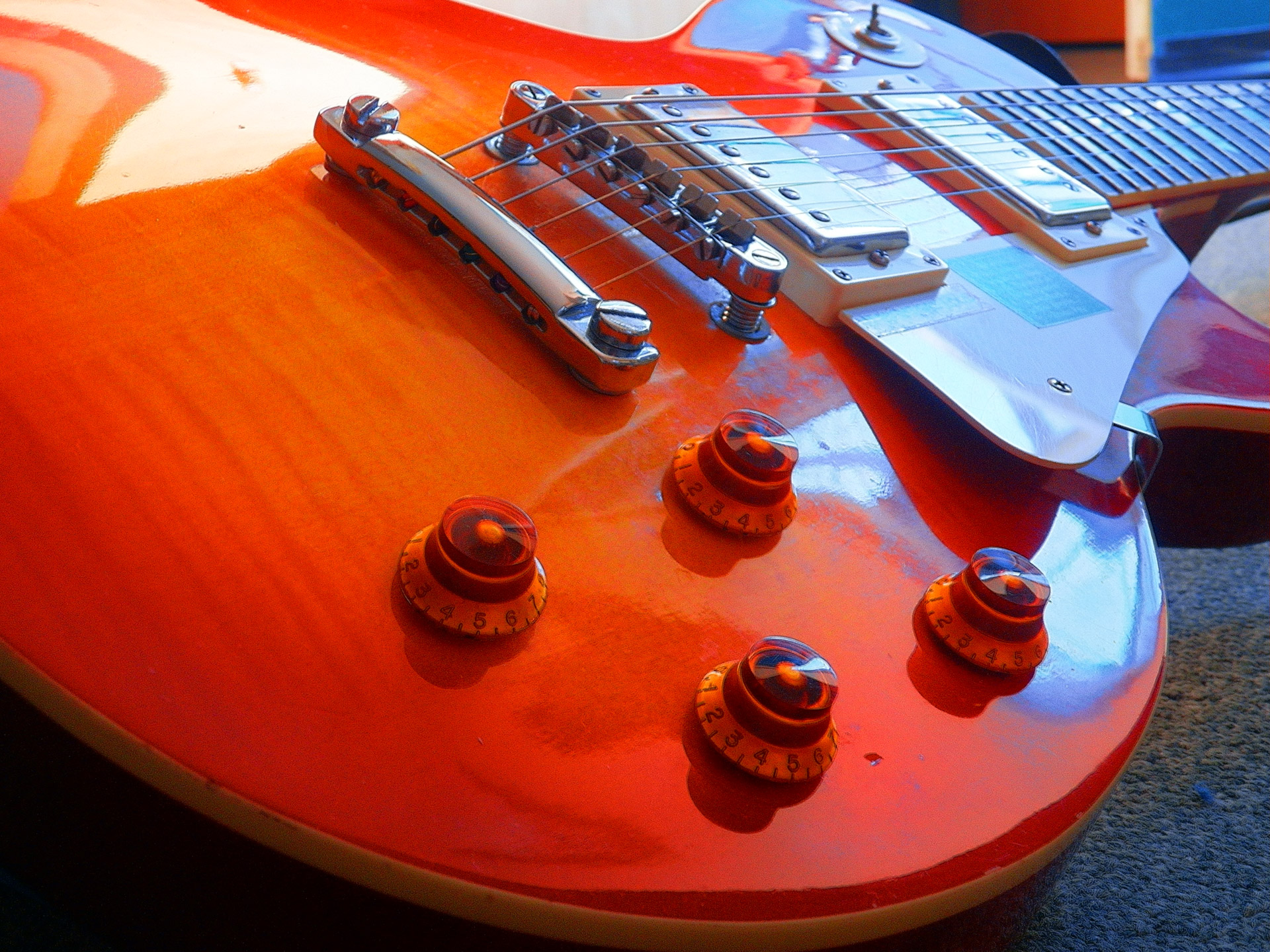
The guitar is thought to have come from sixteenth-century Spain. It went through several variations with four strings, eight strings, and the six-string and 12-string variations. The guitar was brought to North America, from Latin American reagions. These were “accoustic” guitars, which had a hollow body to blend and amplify the sounds the strings.
Most of today's guitars have steel or “gut” strings. Steel strings produce a bright tone, whereas “Gut” strings and metal-wound silk strings produce a softer tone. Eventually nylon strings replaced gut strings. The gut string guitar is used for classical repertoire and by some popular singers. But by the 1930s, however, interests turned to the integration of amplified guitar into Blues, country and jazz.

George Beauchamp developed the first electric “pickup” for a guitar, which he named the frying pan for its round body and narrow neck. Initially it was played like a Hawaiian-style slide guitar. Later Lloyd Loar developed an electric Spanish Guitar in his company called Vivi-tone and eventually a hollow body guitar with an electric pick up was developed by Gibson. However, Gibson's invention had problems with overtones and feedback. The Gibson ES-150, was introduced by Les Pane as the solid Body electric guitar. And Leo Fender released his version of Pane's instrument as the popular Telecaster. In time, the warmer tone of the ES-150 would would be the sound of jazz musicians, while the Telecaster would become the choice of Rock and Roll. Finally, in 1961, Ted McCarty's ES-35 was designed with the best aspects of both hollow body and solid body instruments and it became the guitar that Chuck Berry and B.B. King made popular.
